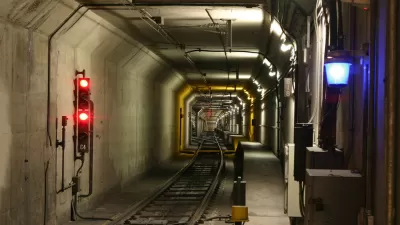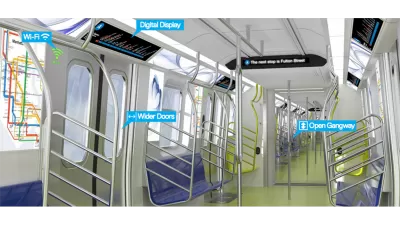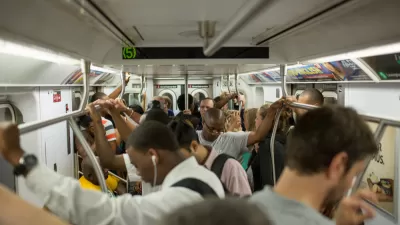New York City is lagging behind cities like London, Paris, and Tokyo in implementing Communications-Based Train Control (CBTC). A recent report provides recommendations on how to speed up the process.
Stephen J. Smith provides analysis of a recent report by the Regional Planning Association (RPA) about the implementation of Communications-Based Train Control (CBTC) on the New York City subway system.
As explained by Smith, CBTC is the remaining option for improving train service on urban transit systems like New York's—organizational fixes are maxed out, and construction is prohibitively expensive. But "London, Paris, Madrid and other cities in Western Europe are making great strides in equipping their generations-old lines with CBTC, while Japan has systems that achieve similar results." However, "New York City, as always, is the laggard."
The MTA, however, is targeting CBTC upgrades of 16 track-miles per year. "Up until now, the MTA has averaged only four track-miles of CBTC upgrades per year," reports Smith. The RPA report recommends 21 track-miles a year.
Smith's analysis provides additional insight into the complexities of upgrading the MTA system as well as more of the benefits of the switch, beyond increased speed and capacity in the system: "CBTC systems are also more resilient than complex traditional signaling systems. The L train’s transponders survived five days under the salt water that Sandy washed in, while the old 'fixed block' systems required much more work to get back in working order."
FULL STORY: Advanced Signaling Makes the Most Out of Old Subways, But Can New York Handle It?

Planetizen Federal Action Tracker
A weekly monitor of how Trump’s orders and actions are impacting planners and planning in America.

Map: Where Senate Republicans Want to Sell Your Public Lands
For public land advocates, the Senate Republicans’ proposal to sell millions of acres of public land in the West is “the biggest fight of their careers.”

Restaurant Patios Were a Pandemic Win — Why Were They so Hard to Keep?
Social distancing requirements and changes in travel patterns prompted cities to pilot new uses for street and sidewalk space. Then it got complicated.

Platform Pilsner: Vancouver Transit Agency Releases... a Beer?
TransLink will receive a portion of every sale of the four-pack.

Toronto Weighs Cheaper Transit, Parking Hikes for Major Events
Special event rates would take effect during large festivals, sports games and concerts to ‘discourage driving, manage congestion and free up space for transit.”

Berlin to Consider Car-Free Zone Larger Than Manhattan
The area bound by the 22-mile Ringbahn would still allow 12 uses of a private automobile per year per person, and several other exemptions.
Urban Design for Planners 1: Software Tools
This six-course series explores essential urban design concepts using open source software and equips planners with the tools they need to participate fully in the urban design process.
Planning for Universal Design
Learn the tools for implementing Universal Design in planning regulations.
Heyer Gruel & Associates PA
JM Goldson LLC
Custer County Colorado
City of Camden Redevelopment Agency
City of Astoria
Transportation Research & Education Center (TREC) at Portland State University
Camden Redevelopment Agency
City of Claremont
Municipality of Princeton (NJ)





























